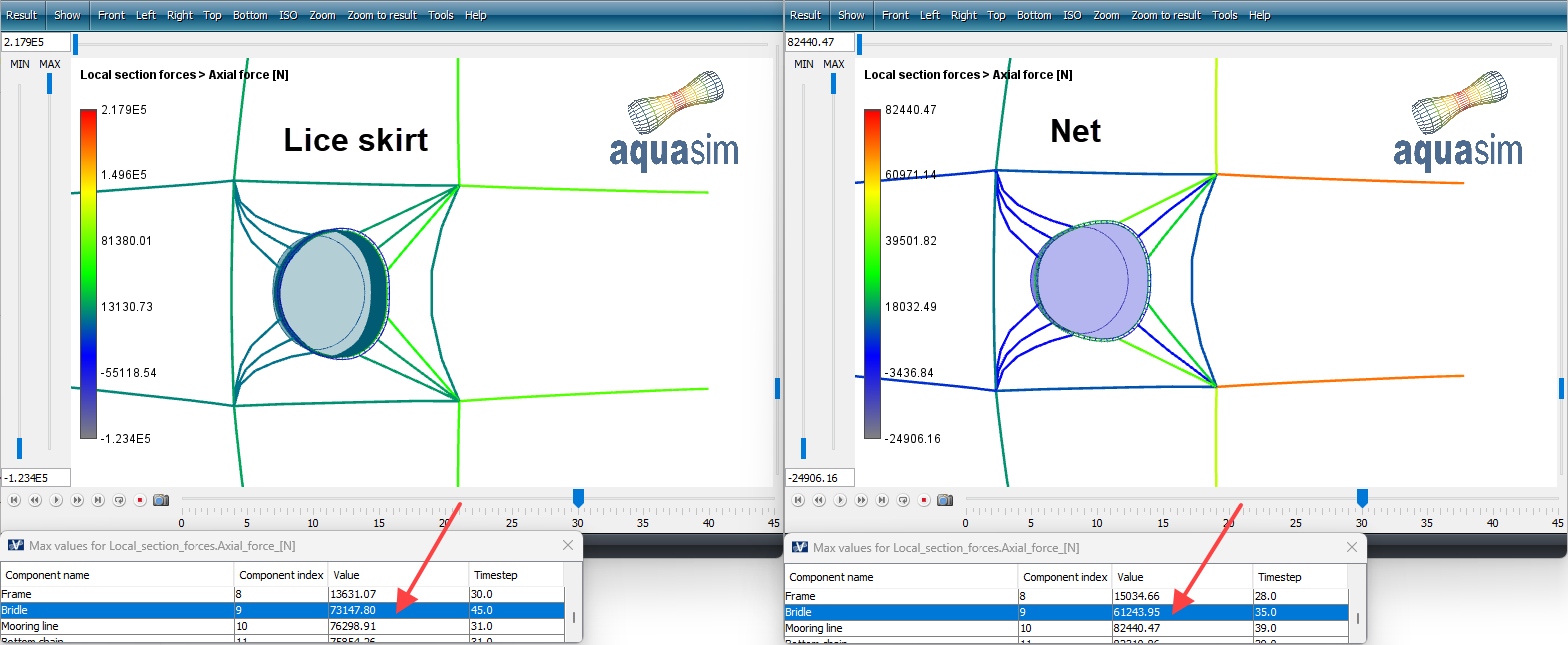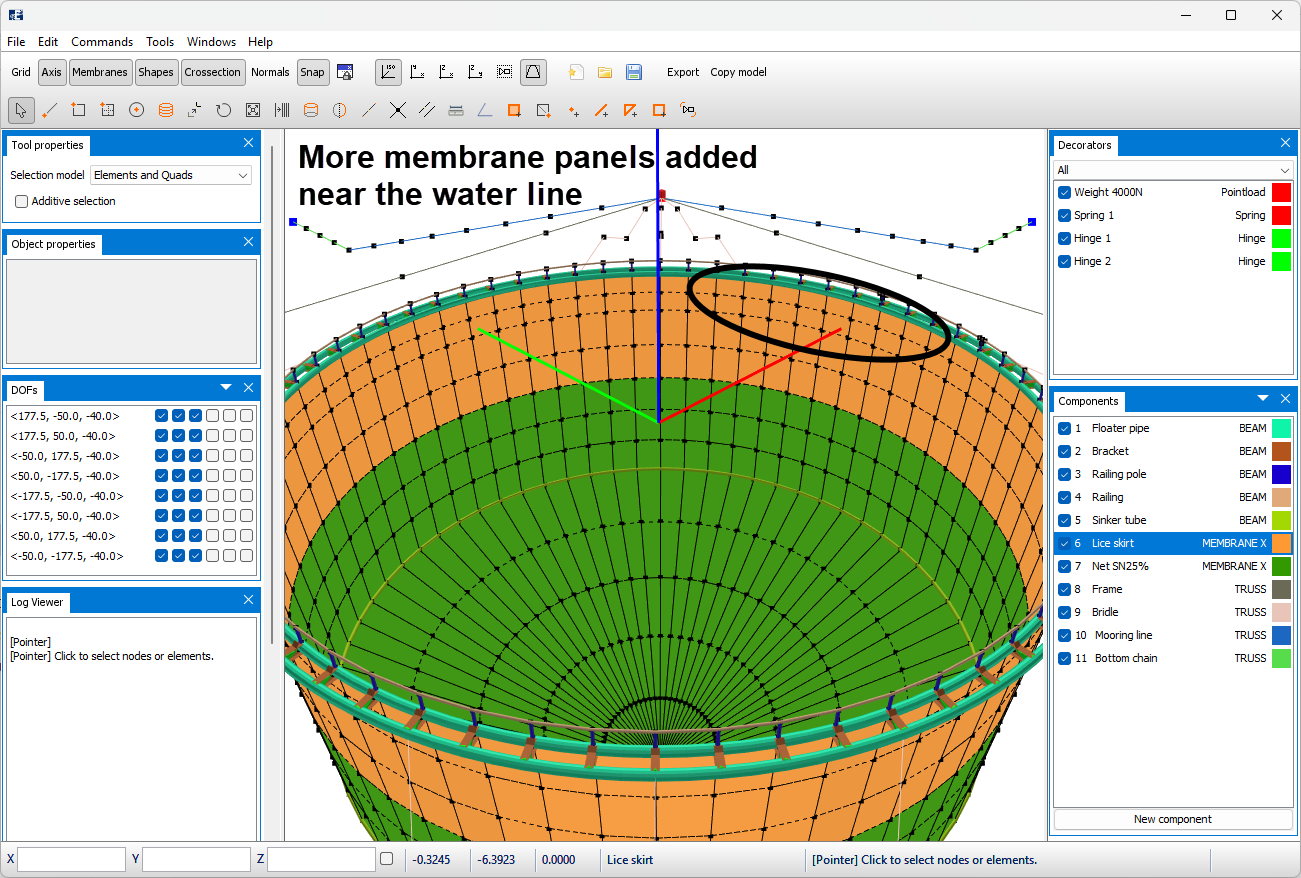Troubleshooting and Summary
Last reviewed version: 2.19Troubleshooting
As with all types of FEM modelling and analyses, one may encounter some challenges in terms of convergence issues and subsequent poor reliability in the analysis results. The cause of the convergence issues may be countless – it may span from improper discretization, human errors such as incorrect material data, lack of damping in your model, too much damping in your model and so on.
There is unfortunately no quick fix, or one fix for all problems that you may encounter when working with dynamic analysis. In the following sections, some suggestions to improve the quality of convergence in your model is presented. These suggestions assume that you have control over the material data for your lice skirt (and other components in your model as well).
When troubleshooting, the user is encouraged to simplify the problem and the model in order to reduce possible sources of errors. Then conduct one change at a time, to keep track of the effect of the introduced changes.
Discretization of lice skirt panels
Building FEM-models one will always encounter the trade-off between the level of details, number of elements and access to computer power. The more comprehensive the model, the more time and effort is needed to solver the differential equations.
In some situations, too few elements (that is, membrane panels) representing the lice skirt may cause the model to be too stiff, especially in the water line where waves contribute to large response. The user may then introduce additional elements on the lice skirt in the vicinity of the water line. This is illustrated in the figure below.

Have in mind, the convergence issue might as well be due to too many elements in the lice skirt. Making it to soft may introduce unrealistic large response. The user is encouraged to try either increase or decrease the number of elements in the vicinity of the water line.
Discretization of time-domain analysis
The discretization of the time-domain analysis is governed by Num total steps for waves and Num steps for one wave.

For hydrodynamic problems that encounter large deformations over short period of time, it can help to increase the number of steps. This better enables AquaSim to capture differences in forces and displacements between iterations.
However, this will only have a limited effect. You will come to a point where increasing the number of steps does not have any effect – you will also have the trade-off that increased number of steps will affect the computational time of your analysis.
Convergence criteria
The Convergence criteria (and Change dynamic convergence criteria) simply explained, is the tolerance that regulates when AquaSim should be satisfied with one analysis-step and move to the next. The larger this value, the larger difference in forces and displacements are allowed between each iteration in an analysis-step.
Having this too strict or too spacious, this can make it difficult to achieve convergence in the analyses. The user may try to tighten the convergence criteria – or vice versa – to see if this improves convergence.
Summary
In this tutorial you have been presented in detail the different parameters that determines the loads on lice skirts, comparison of loads with and without lice skirts, and at last some trouble-shooting suggestions for your model.
The user must have in mind that dealing with hydrodynamical problems in FEM software can be a challenging task due to large deformations and complex load transfers between components. There are no one-fix for all issues that may arise. When troubleshooting, the user is encouraged to simplify the problem and the model in order to reduce possible sources of errors. Then conduct one change at a time, in order to keep track of the effect of the introduced changes.